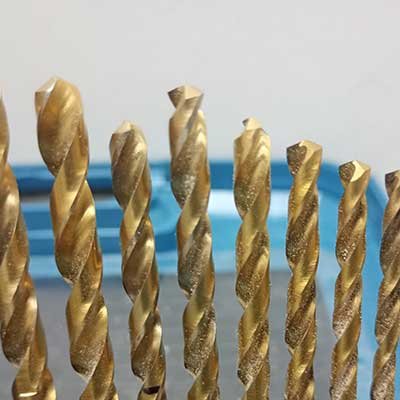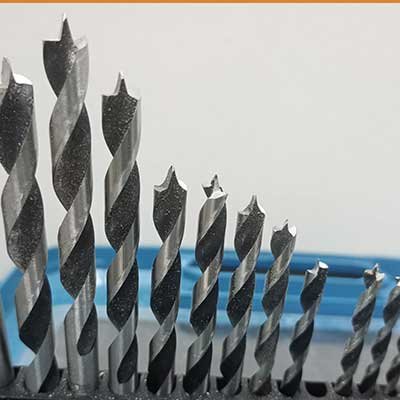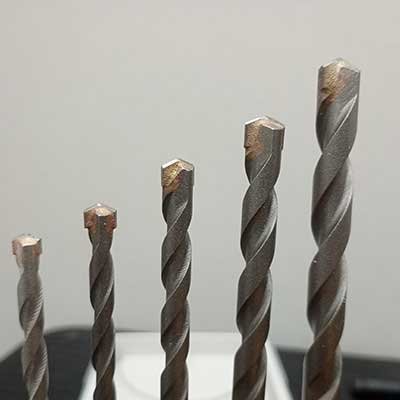The whole issue of choosing a drill bit feels a bit of minefield. It doesn’t need to be.
We cover it on lots of our courses, so that you feel confident choosing the right drill bit for the right material.
Drilling into Wood
If you are just drilling into wood, you have a couple of choices…..
High Speed Steel (HSS)

HSS Drill bits (High Speed Steel) are usually a gold colour or black.
The point should feel a bit sharp, but not painfully so.
These are actually designed for metal, and they are great at drilling into metal, but they are also great for everyday drilling into wood, and can be used for plastics, as well.
They’re a great all-rounder. I generally buy them in packs of 5 from Screwfix, (in my favourite sizes). This makes them pretty economical to use. When they go blunt, I mark them up, and hang onto them to mark drill holes on plaster & masonry walls.
If you’re using them in metal, then drill slowly and steadily. If you need to drill a large hold, start with a small hole, and gradually move up through the sizes. This gives you, the drill and the drill bits a fighting chance.

Brad Point Bits
You can also use a Brad Point Drill bit in wood.
These have a really sharp point, which hurts when you press it into your finger (no need to try it, just take my word for it). They can only be used on wood, and possibly plastic, but use them on metal or masonry, they will go blunt immediately.

Drilling into Walls
When you’re drilling into walls, you will need Masonry Drill bits.
These are often Silver-coloured or Gunmetal Grey.
They don’t feel sharp to the touch, but have what looks like a reinforced point. This is because they will be drilling into a hard material, and can be used with a Hammer Drill. Basically they use both blunt force trauma & a cutting action at the same time, so need to be very robust.
They’re not designed for using on soft materials like wood or plastic. If you do, you will probably just create an unpleasant burning smell. You can use them on plaster and plasterboard.
Drilling into Metal
Use HSS drill bits when drilling into metal (that’s what they’re designed for).
Drill slowly, and don’t try using a blunt drill bit.
For larger holes, start by drilling a small hole, then slowly increase the size of the drill bit until you reach the right size. Trust me, this may sound a bit slow and laborious, but it will be more successful more quickly.
Drilling into Plastic
For drilling into plastic, I generally use an HSS Drill bit (see how versatile they are). Plastic can get hot and melt, so make sure the drill bit is sharp, and don’t drill to fast.
Get more Practice…..
If you want to get some practice using Drills and choosing Drill bits, then why not try one of our Beginners DIY Courses. We will take you through the process slowly and clearly. You can have as much hands-on practice as you need …
Nailing it!
Beginners DIY Skills
Introduction to Hand Tools & Cordless Drills.
Essential Confidence-building Skills
DIY Next Steps
More DIY Skills
Put the knowledge into Practice.
Learn how to fix things to walls.
Drill Down into Drilling
More Drilling Skills
Get confident with using more Drills.
Build your DIY Confidence
